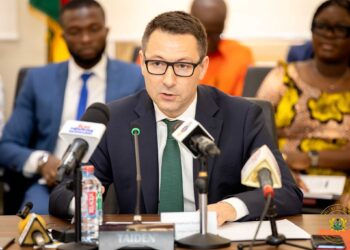Exxon Mobil Corp. is considering resuming a liquefied natural gas project in Mozambique, but with an even bigger capacity than the one it shelved partly because of an Islamic State-linked insurgency.
In a statement, the US energy giant called for expressions of interest to design and build an LNG plant producing as much as about 18 million tons a year. Earlier plans envisaged a 15.2 million-ton project.
Exxon’s announcement comes after TotalEnergies SE said last month that it’s considering restarting its own LNG export venture in Mozambique’s Cabo Delgado province. The projects were halted two years ago following an attack on the town of Palma, but a mix of local and foreign troops have since made progress in containing the violence that’s left more than 4,600 people dead.
The LNG projects offer an economic lifeline for impoverished Mozambique, with potential investments exceeding the southern African nation’s annual output. The government has also been counting on LNG export revenues to service its debt, including a $900 million eurobond.
Exxon is part of a consortium with Eni SpA of Italy, which in November exported Mozambique’s first LNG production from a floating vessel offshore. That plant has an annual capacity of 3.4 million tons.
The much larger onshore project would involve modules of 1.5 million tons, according to the company’s statement. The deadline for submitting expressions of interest is the end of this month.
Alex Munton, Director of Global Gas Service at Rapidan Energy Group, said “Modular is attractive, and potentially the best solution in Mozambique, from the standpoint that it offers the opportunity to build at scale while also mitigating some of the security risks during construction”.
Companies Forced to Delay Decisions
Across the industry, most companies have been forced to delay decisions on new LNG projects and write down investments in existing production plants, in stark contrast to last year’s record level of approvals for plants.
Success in the talks could be particularly important for Exxon, which still has to woo investors ahead of a delayed final investment decision (FID) on its $30 billion Rovuma LNG project.
Meanwhile, the FID on Total’s $20 billion Mozambique LNG project was made in June 2019.
The current contract was signed by Eni and Anadarko. In 2017 Eni sold a stake in the Rovuma venture to Exxon, which is now the project operator, while Anadarko sold Mozambique LNG to Total last year.
It allows the projects to extract a combined 24 trillion cubic feet of gas from the “straddling” reserves, with a 50/50 share in phase one of development.
Now Exxon and Total are trying to rework the agreement to increase extraction from the straddling reserves as a way to boost efficiency and increase their projects’ annual LNG production, according to the sources.
A Standard Bank study from 2019 said Exxon’s Rovuma LNG would use 15.1 Tcf of straddling gas reserves, above the unitisation cap as it included gas reserved for domestic use and condensate, plus 6.4 Tcf of non-straddling reserves – to produce 15.2 million tonnes per annum (MTPA) of LNG.
Instead, Exxon wants to extract only gas from the straddling reserves, increasing the amount it can access from the shared area to around 20.1 Tcf, which would result in 7.9% higher production, at 16.4 MTPA, and lower unit costs.
This would mark a considerable efficiency gain for Rovuma’s phase one, projected by Exxon to last 25 years.





















